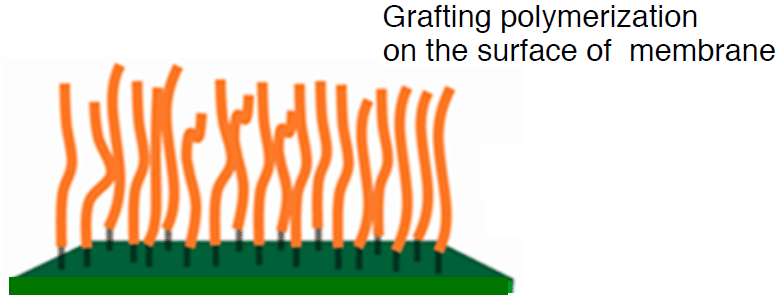
Are you familiar to certain foods or food components that provide health benefits? These foods known as “functional foods,” are considered to provide benefits beyond basic nutrition and can play a role in minimizing the risk of infectious and non-infectious diseases. For example, fruits and vegetables, whole grains, fortified foods and beverages and some dietary supplements. Consumer interest in the relationship between diet and health has increased the demand for information about functional foods. Many academic, scientific and regulatory bodies have been developed, or are on the way of development, to produce functional food in terms of consumer expectations. Membrane technology is one of the best among current processing technologies.
About membrane technology
- Membrane technology in the food industry is the second largest industrial market for membranes after water and wastewater (market volume of about € 800–850 million).
- Conventional filtration depends on gravity or vacuum that create the driving force necessary for the liquid phase to pass through different kinds of filters (e.g. cellulose filter papers and glass fiber filters) or granular materials (e.g. sand and anthracite).
- The modern membrane technologies in the food industry are the pressure-driven membrane processes such as microfiltration (MF), ultrafiltration (UF), nanofiltration (NF) and reverse osmosis (RO).
Challenges

Challenges must be met in the design of efficient and economical separation and concentration technologies for the food industry
- The diversity in food systems: Each food system has its own physical characteristics such as viscosity, size, shape, concentration of particles and texture.
- The lability of food components during processing: Many food components are prone to chemical transformations when exposed to high temperatures, intense pressure or oxygen.
- The need for safer and milder technologies: The aim of any food processing method is to furnish food with high nutrition, microbiologically clean and free from external contaminants.
- The need for low-energy, sustainable processes: New processes that will minimize energy consumption and carbon footprint.
Advantages of membrane technology
- Food processing at moderate temperature
- High selectivity based on unique separation mechanisms, for example sieving, solution-diffusion or ion-exchange
- Compact and modular design for easy installation and extension
- Low energy consumption compared to conventional method
Types of membranes used in food industry

Membrane consumption in food industry
Worldwide annual growth of membrane consumption is 7.5%. Several hundreds of thousand square meters of membrane (Ultrafiltration: 400,000; Nanofiltration: 300,000; Reverse osmosis: 100,000; Microfiltration: 50,000) are currently operating in food industry. About 2/3 of the membrane are installed in the dairy industry (Saxena et al., 2009). The utilization of membranes in dairy industry has been greatly enhanced by introducing novel materials viz. cellulose acetate, polyamides and polysulphons.
Membrane technology used in building the functional food products


Disadvantage of membrane technology

Membrane-biofouling is a major problem caused by communities of aggregated microorganisms surrounded by a self-produced matrix of extracellular polymeric substances. This causes lower final food quality and food-borne diseases. Control of membrane-biofouling needs high costs in the form of energy and cleaning. The most widely used biofouling control method is pre-disinfection; however, disinfectants can degrade the membranes and they are generally unsuccessful in preventing the bacterial attachment to the membranes and eventually form biofilm. It is difficult and sometimes impossible to remove biofilms once they are formed on the membrane surface and there is currently no other widely applied, successful and cost-effective control strategies. Hence, our approach to this problem is to develop novel anti-biofouling microporous membranes through the incorporation of heteroatom (nitrogen/sulphur), functional group (OH, NH2) into polymer skeleton as well as grafting on membrane surfaces.

Our approaches:
1) Incorporation of heteroatom (N/S) atom on polymer skeleton

2) Functional group (OH, NH2) on polymer skeleton

3) Grafting polymerization on the surface of membrane







